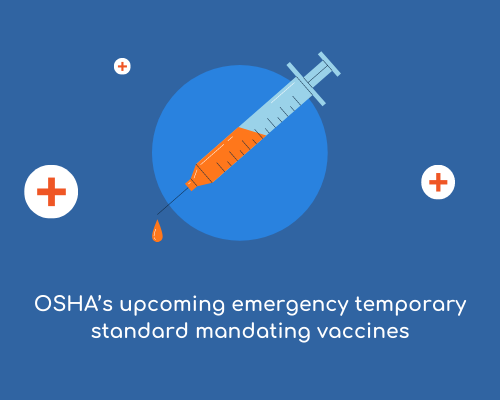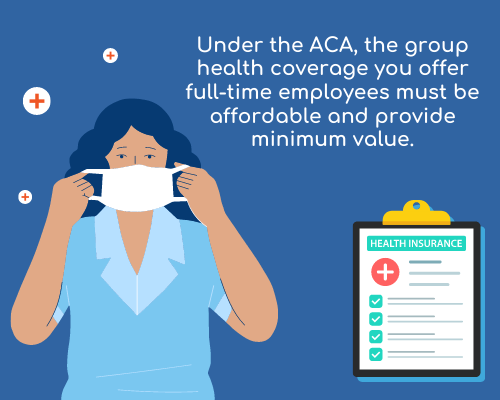Small businesses, vaccines, and the ACA — What you need to know
 OSHA’s upcoming emergency temporary standard mandating vaccines for tens of millions of employees won’t reach smaller employers. It will only cover employers with 100 or more employees.
OSHA’s upcoming emergency temporary standard mandating vaccines for tens of millions of employees won’t reach smaller employers. It will only cover employers with 100 or more employees.
What does reach employers with at least 50 full-time employees, including full-time equivalent employees? The Affordable Care Act and its rules on wellness plans, affordable coverage, and free-rider penalties. These demand your immediate attention.
Premium surcharges and affordable coverage
At the outset, when we read about Delta Airlines’ extra $200 a month health premium surcharge on unvaccinated employees, we couldn’t believe our eyes. It seemed way too high. Surprisingly, it isn’t.
Premium rewards and surcharges are part and parcel of activity-based wellness plans. They’re calculated using the total of employer and employee contributions. If, for example, you pay $400 a month toward employees’ coverage and they pay $250 a month, the total is $650; 30% of $650 is $195. So unvaxxed employees could be charged as much as $445 a month for their health benefits.
But premium surcharges are just the beginning of the story. Under the ACA, the group health coverage you offer full-time employees must be affordable and provide minimum value. For 2021, affordable coverage is coverage that doesn’t exceed 9.83% of your chosen safe harbor: the W-2, Box 1 safe harbor or the hourly rate of safe harbor or the federal poverty-line safe harbor.
You probably determined whether your group coverage was affordable at the beginning of the year. But there’s a huge problem—the addition of the surcharge may now make benefits unaffordable. How: Unless the reward is for smoking cessation (or a surcharge for employees who continue to smoke), you must redetermine affordability, taking the surcharge into account and including this amount, along with the lowest-cost self-only plan amount, on Line 15 of all full-time employees’ 2021 Forms 1095.
 Free-rider penalties
Free-rider penalties
For 2021, if your coverage isn’t affordable and even one employee goes into the ACA insurance marketplace, buys individual insurance, and qualifies for a premium tax credit, you’ll be in line for one of two free-rider penalties:
- $225 per month per employee, if you fail to offer at least 95% of your full-time employees affordable, minimum value group coverage at all.
- $338.33 per month per employee, if you offer unaffordable insurance that doesn’t provide minimum value.
The second penalty is the one most likely to apply in this context.
Complicating matters further, employees who buy individual coverage through the marketplace normally aren’t eligible for a premium tax credit if their modified gross income exceeds 400% of the federal poverty line. For 2021, employees whose modified adjusted gross income is $51,520 wouldn’t be eligible for any premium tax credit (400% × $12,880). But as part of pandemic relief, the threshold is raised to 600%. So employees whose modified adjusted gross income is $77,280 could qualify for a premium tax credit, which could leave you on the hook for a free-rider penalty.
Bottom line
Premium surcharges are effective because hitting employees in the wallet is usually enough to get them to modify their behavior, whether it’s to quit smoking or to roll up their sleeves.
But before you impose a surcharge on unvaxxed employees, you’re going to need to do the math.






